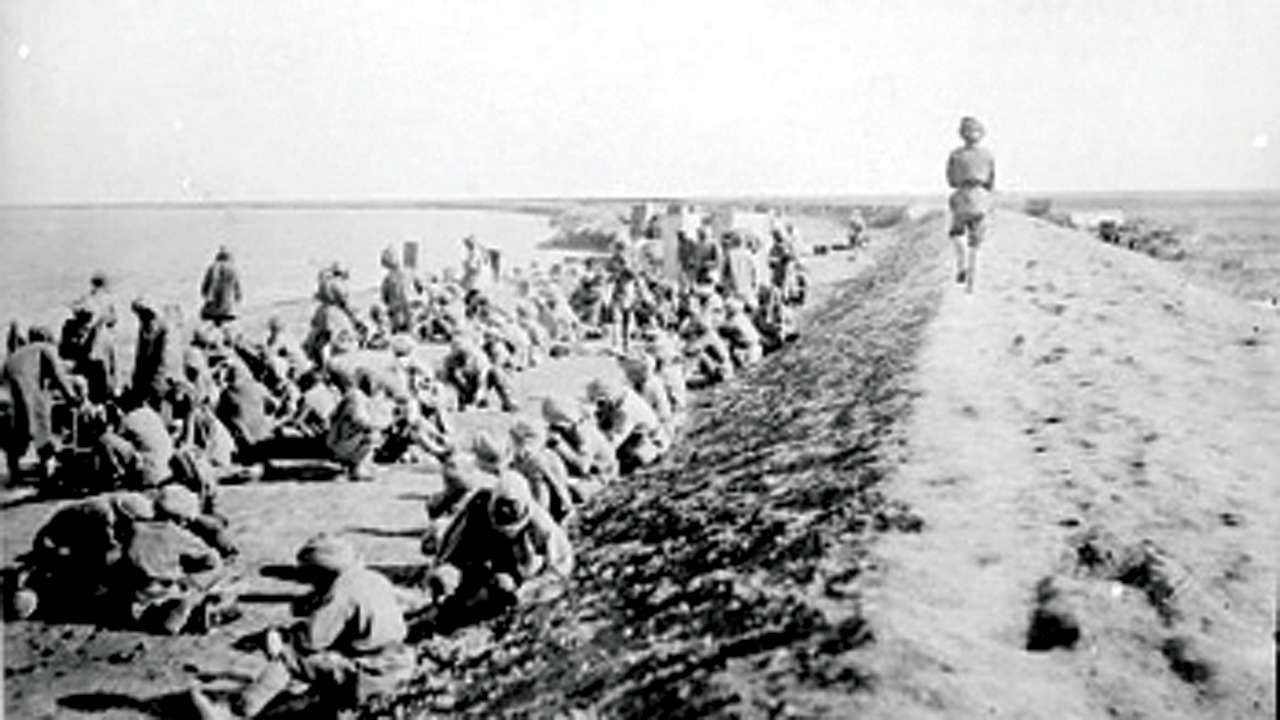
In the First World War, Indian blood was shed copiously in Iraq. Iraq was a key war front for the British as it was the most bountiful possession of Ottoman Turkey and had to be kept at any cost. Being quite near India, it was not surprising that in 1914-1918, about 7,00,000 Indian troops were fielded there.
As authors such as A. J. Barker, Ian Cardozo and Kristian Coates Ulrichsen depict, by mid-1915 the British expedition was tottering: the tenacious Turks were determined to eject Britain from the region. The capricious and seemingly indolent natives couldn’t be trusted: many Iraqi Arabs supported Turkey. The nomadic tribes were quite predatory. Flood, silt, flies, heavy downpours, storms and deadly diseases significantly hampered operations. Above all, the logistical difficulties in maintaining the huge invasion force were staggering. The Empire recruited more from the ‘martial races’ for fighting, but they needed bodies for the dirty work — i.e. manual labour, and sanitation duties. India, with her teeming millions of wretched and oppressed, could meet this demand.
Massive infrastructure works had to be commissioned in Iraq: the British Army demanded thousands of labourers. Porters and mule-drivers were also required in large numbers. However, news about the British difficulties had become widespread and few were eager to enlist. The British now pressed their administrative machinery in India and the princely states to ‘organise’ huge labour detachments (with many from tribes and the lower-castes), usually headed by retired soldiers. Resistance to such enlistment, and ethnic and caste conflicts in such detachments contributed to much strife. A notable example was the Kuki Rebellion in Manipur. Though most were sucked into Iraq, some labourers were sent to European and African fronts as well. Despite this, the British could still not find men for the monumental manual scavenging tasks, as the caste element made this very difficult. They considered ‘impressment’, i.e. forcefully commandeering subjects without notice.
In her study of Indian laborers in wartime Mesopotamia, historian and author Radhika Singha notes that the British now cast a wider net. Impressment, i.e. forcefully commandeering subjects without notice, was considered; some British leaders proposed to hold the ‘Criminal Tribes’ hostage for impressment where they finally decided to form detachments composed of Indian convicts: they would particularly ‘persuade’ the low-caste prisoners to become latrine cleaners and night-soil carriers, in return for a reduction of their sentences. In the meantime, the British propaganda machine had been presenting the Indian war effort as a fully voluntary endeavour. A rather predatory enlistment of low-caste convicts was therefore covered by fig leaves of ‘reform’ and ‘regaining honour’. Thousands of such ‘volunteers’ were sent into crushing work regimes at half the wages paid to non-convict labourers. In total, about 1,00,000 Indian labourers were sent to the Iraq front after much bureaucratic and legal acrobatics — the pretexts had to be maintained.
The moniker ‘Jail Labour Corps’ was used for convict detachments, even though the convicts soon began to hate it. As planned, they were assigned to manual scavenging. Sometimes they were used to break up local Arab protests. Despite stringent rules on prominently displaying their identity as convicts, the convict-labourers soon adopted military trappings and insignias. Perhaps they truly believed the British propaganda about regaining honour with their service. But notions of honour soon became double-edged as the convicts began to refuse to perform their ‘demeaning’ latrine duties. Equal compensation and leave was also demanded. The British, however, crushed protests and any attempts by convict labourers to assert themselves. Though some demands were met, servitude was maintained by the threat of force. The ‘free’ labourers, on the other hand, did not cause much problems and were valued for their cost-effectiveness.
British leadership considered retaining Indian labourers in Iraq for a longer period for further imperial projects. However, after the Turks retreated in early 1918, pressure from sections of the government and the Arab leadership forced the British to slowly send back Indian labourers. Some convict labourers and free labourers managed to stay behind by deserting or finding employment in other sectors. The labour demand in post-war West Asia provided ample opportunities to those who had acquired new skills. Such Indians perhaps created the precedent and the foundations for the later waves of emigration of Indian labourers into West Asia.
It was not a happy exercise though. Many labourers perished in Iraq due to exertion, malnutrition, and disease while more suffered resultant infirmities for the rest of their lives. West Asian perceptions of Indians were arguably warped in this period — thousands of Indians slaving away for their masters were a far cry from the prosperous medieval Indian kingdoms which once attracted many Arabs. The adverse impact on tribes and low-caste groups due to enlistment drives was ignored. Contemporary media and the Indian political mainstream also ignored low-caste convicts being scooped up for manual scavenging duties abroad. It was only in 1920 that the Congress passed a resolution requesting Indians to not serve there but even that was in the wake of an Iraqi rebellion.
The ignorance continues to this day. Many are aware and are proud of Indians’ war-fighting contributions in colonial wars and the World Wars; the story of thousands of labourers who served in foreign shores during the World War is however largely forgotten.
The author, an IIM Ahmedabad graduate working in the energy sector, has a keen interest in history, politics, and strategic affairs. Views are personal